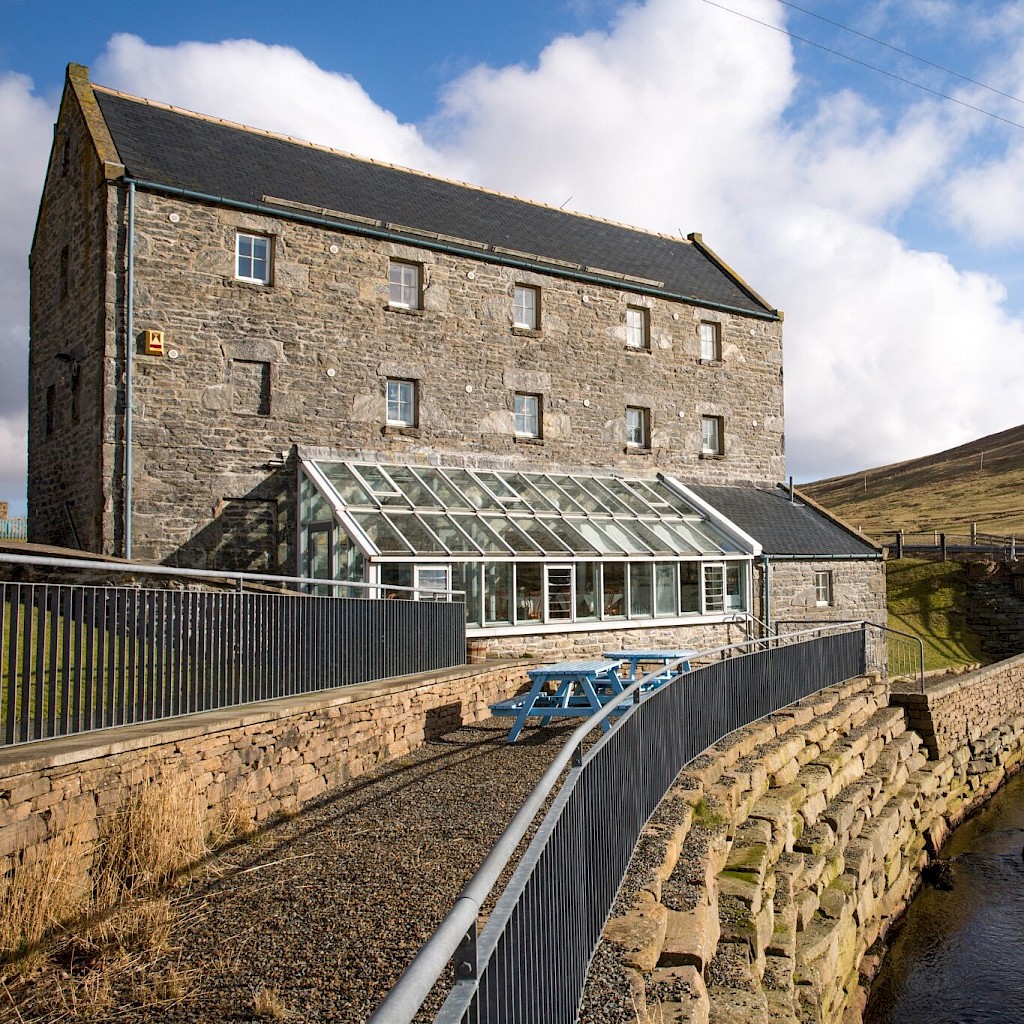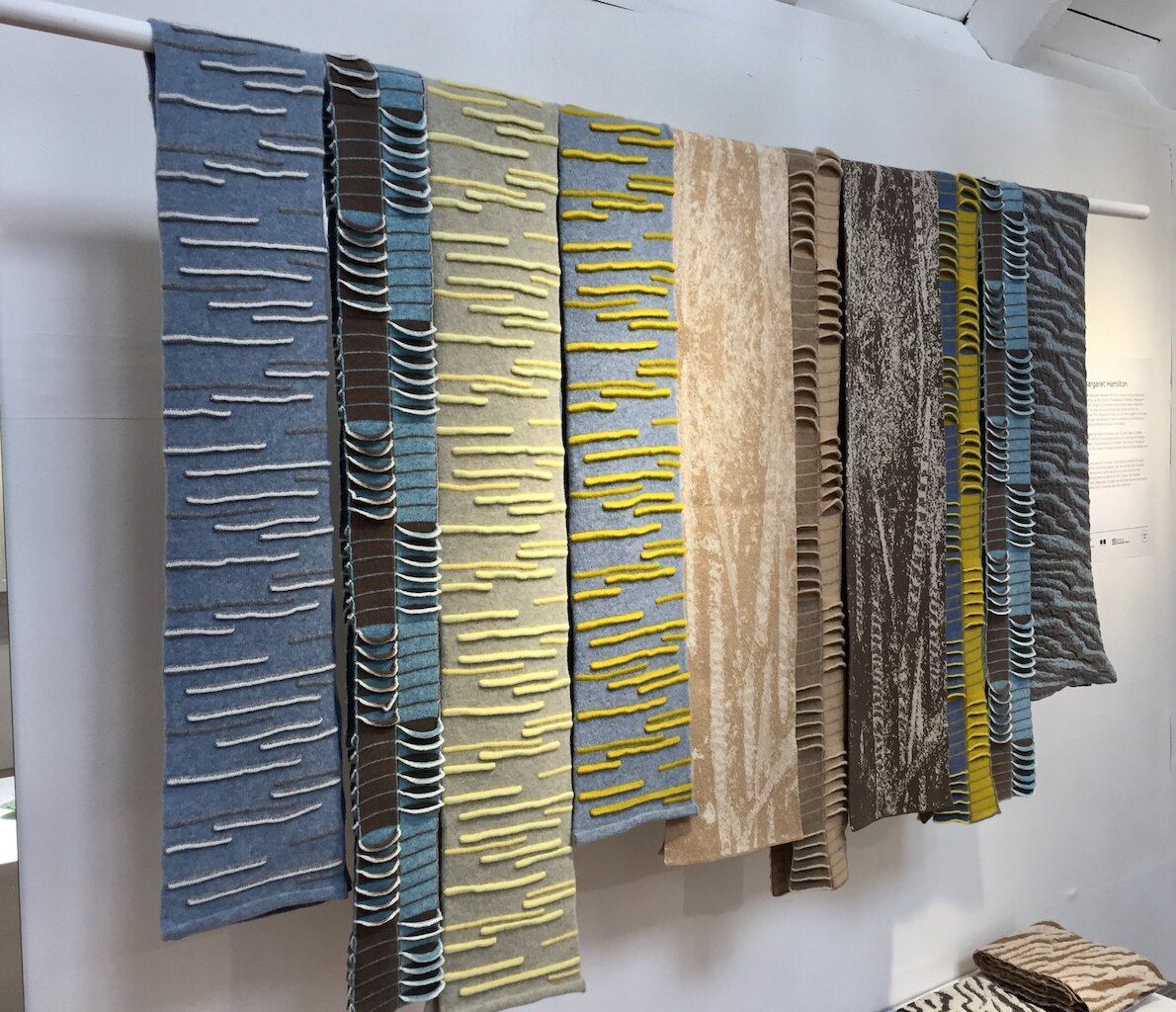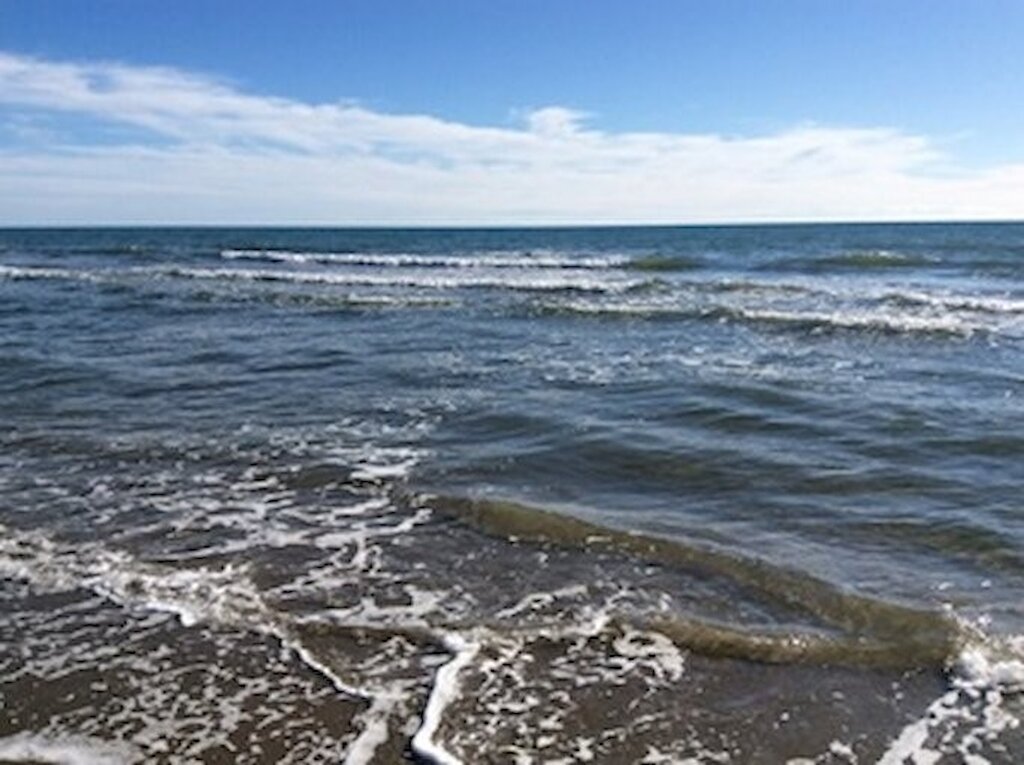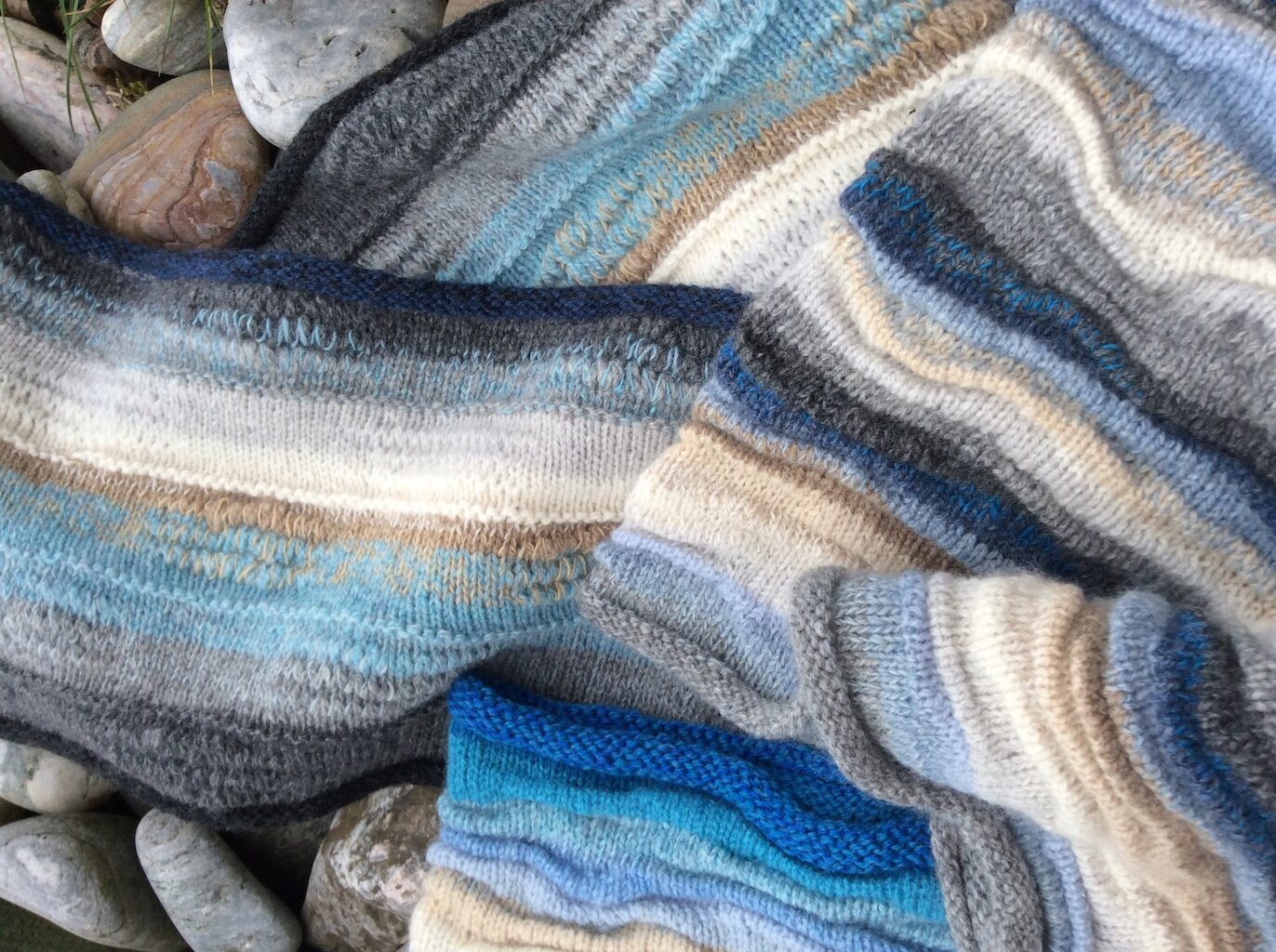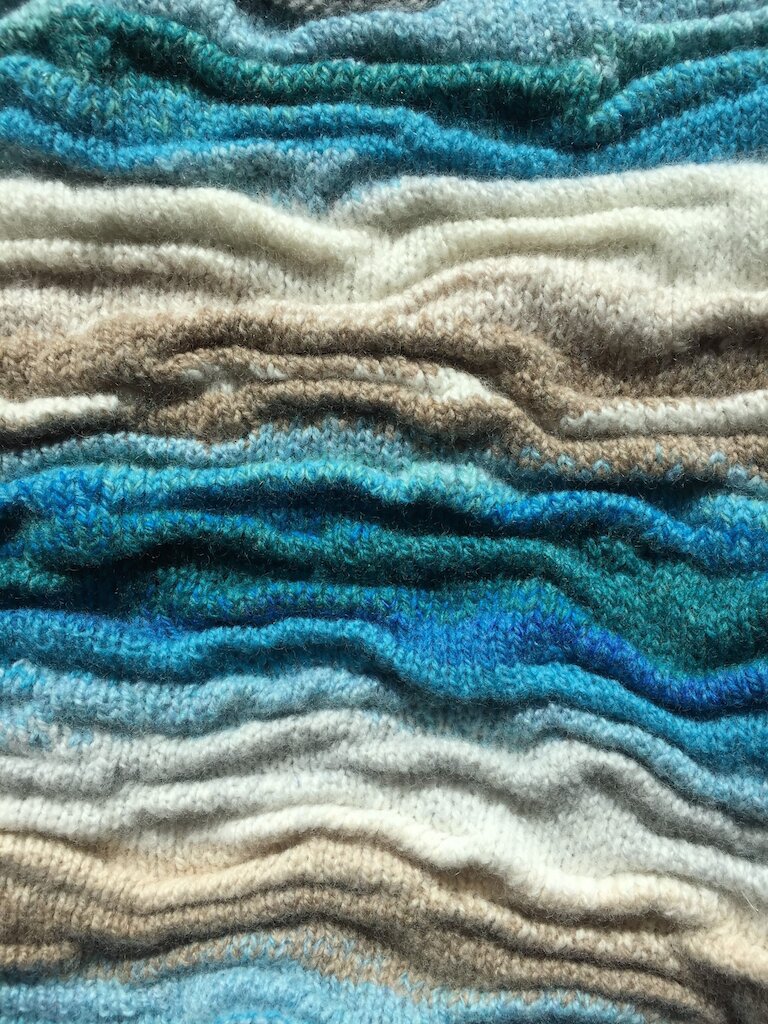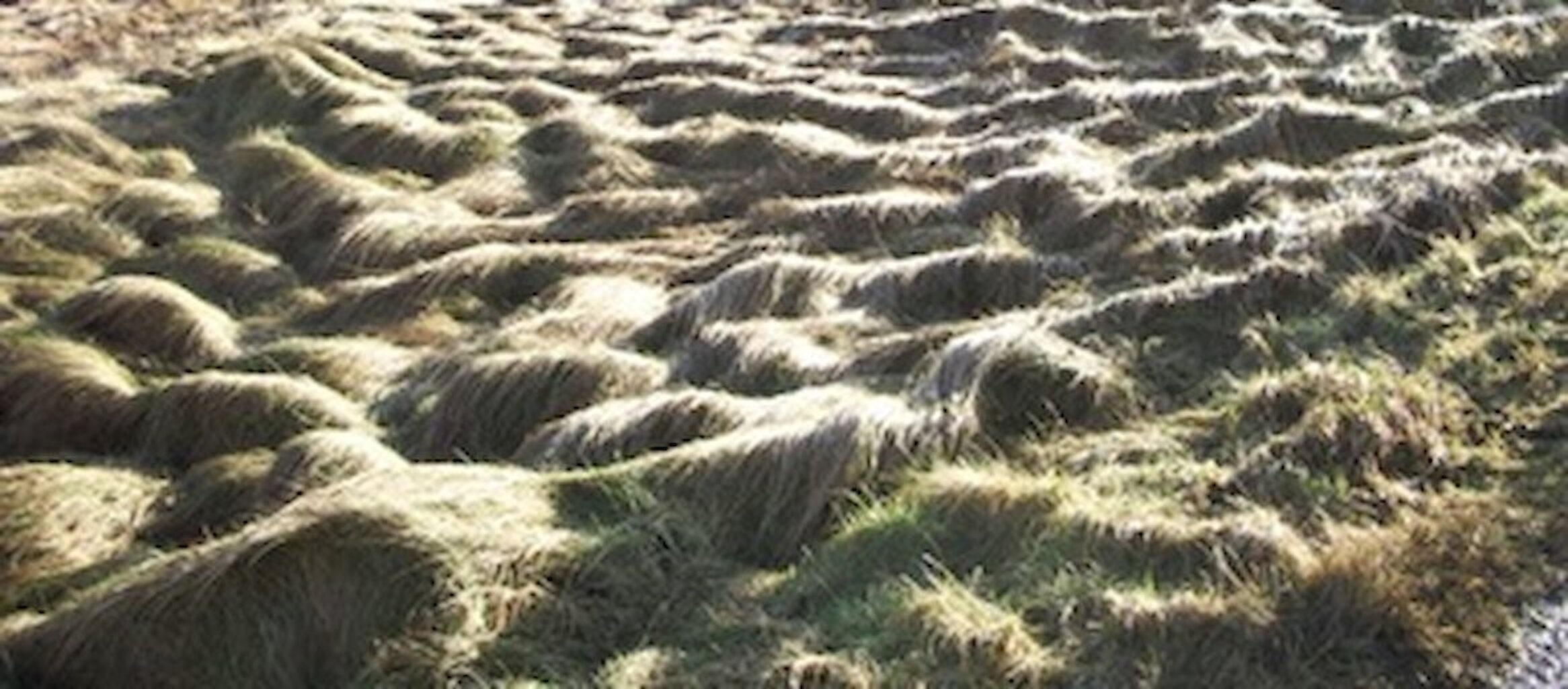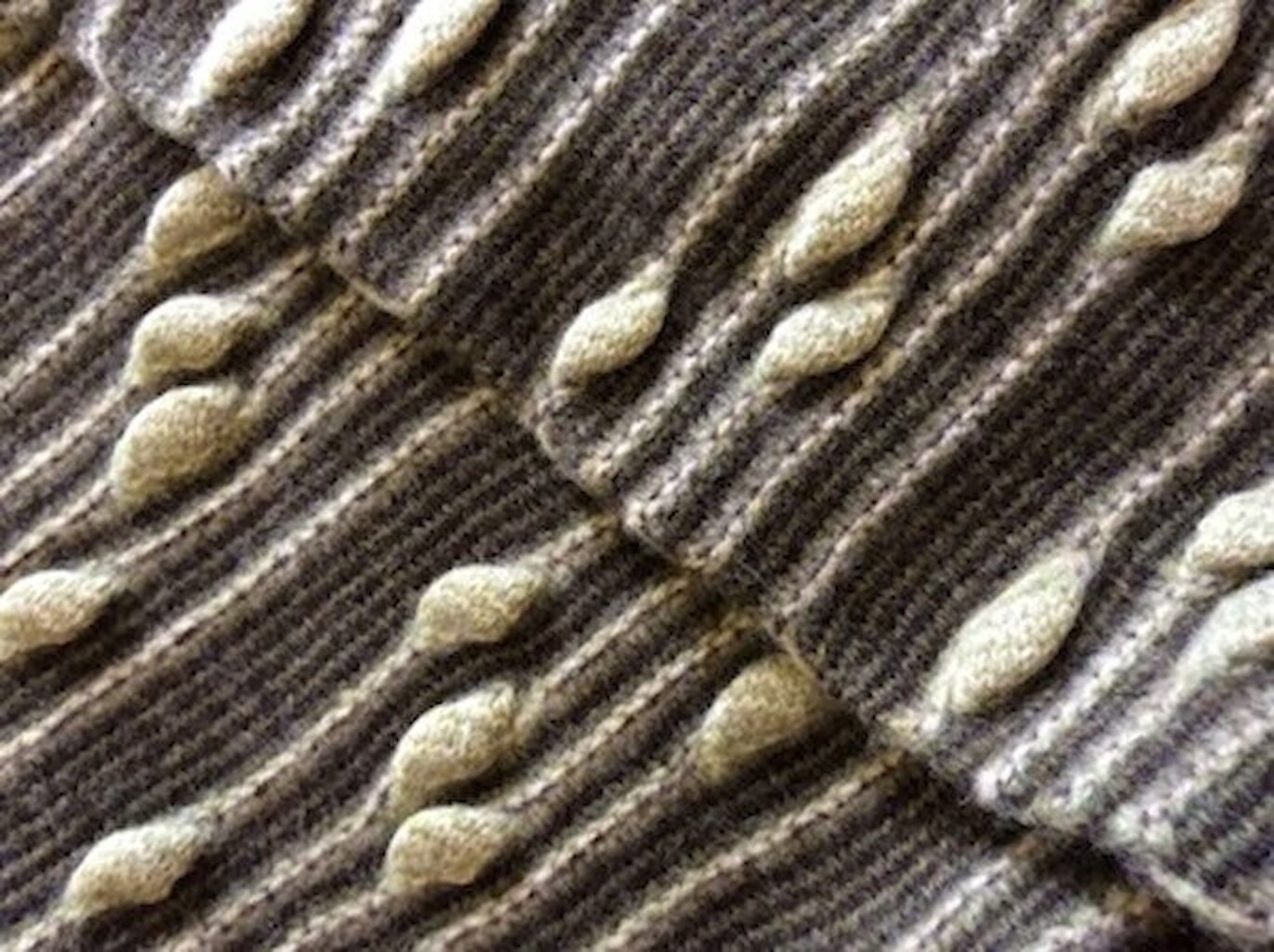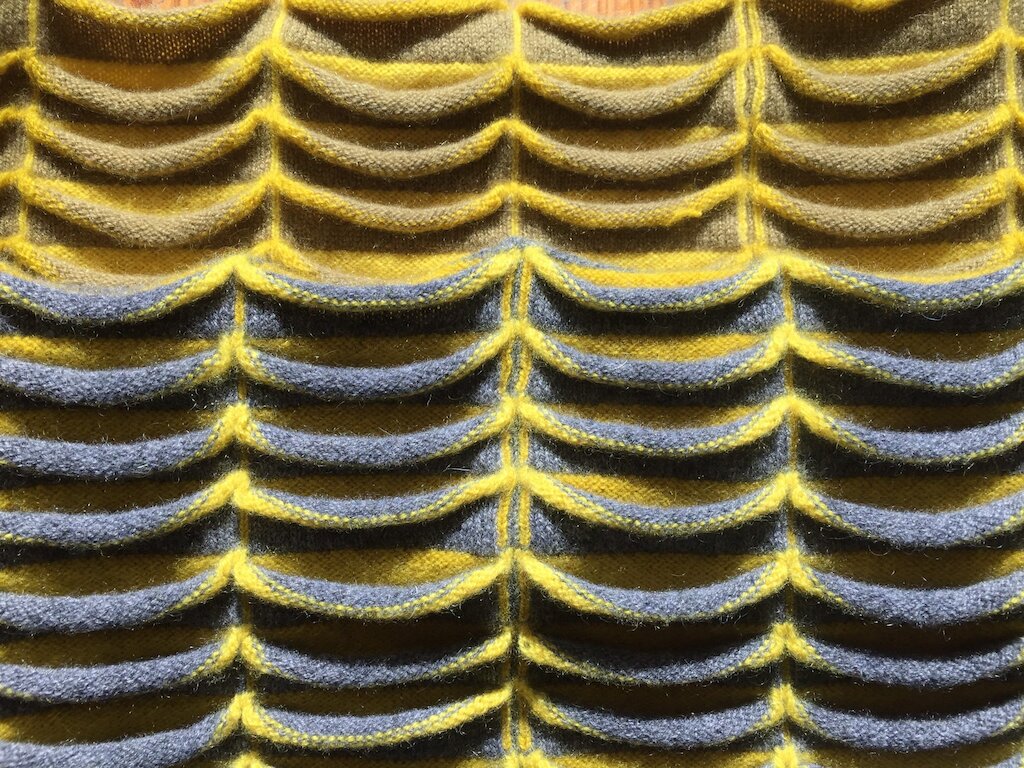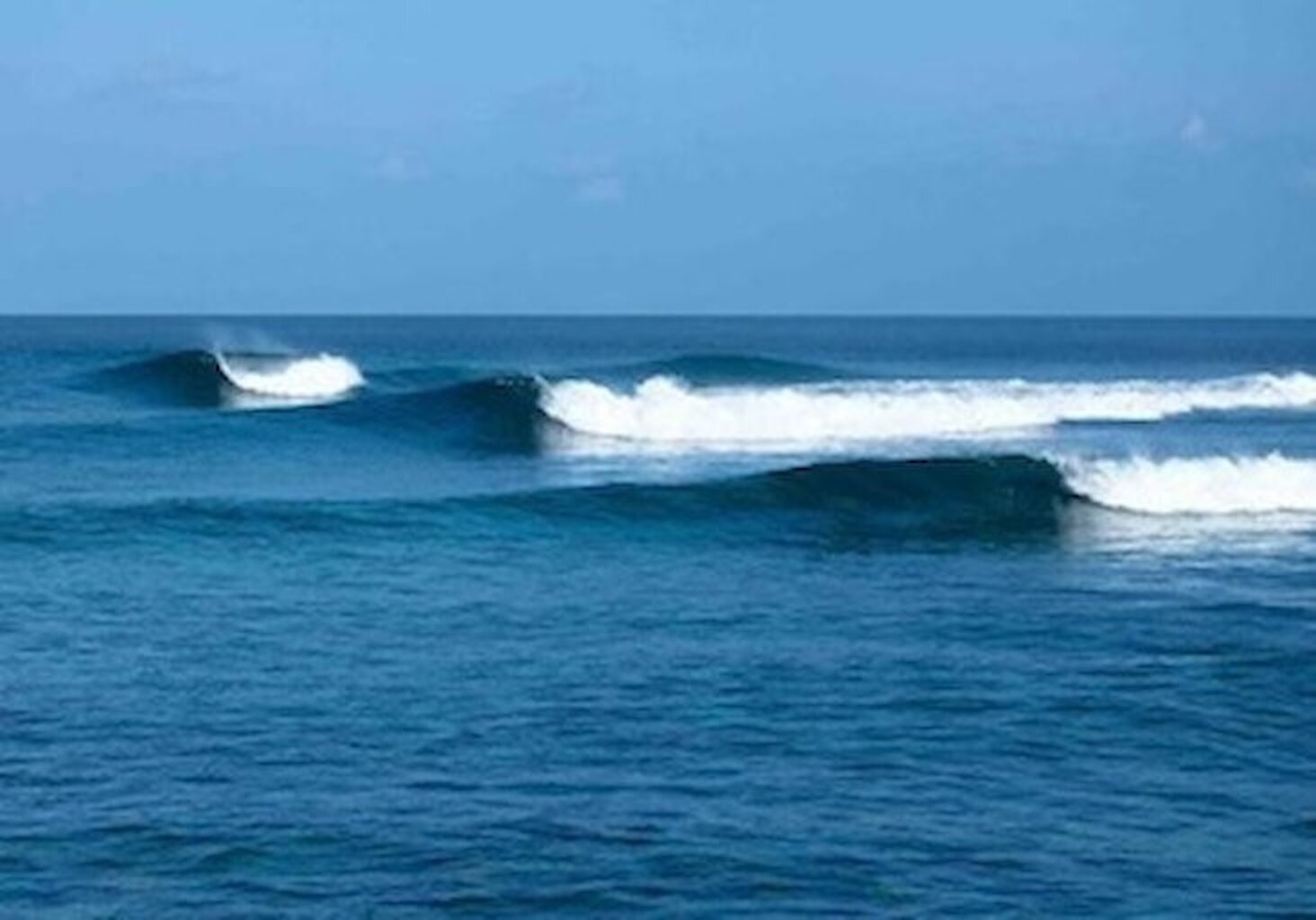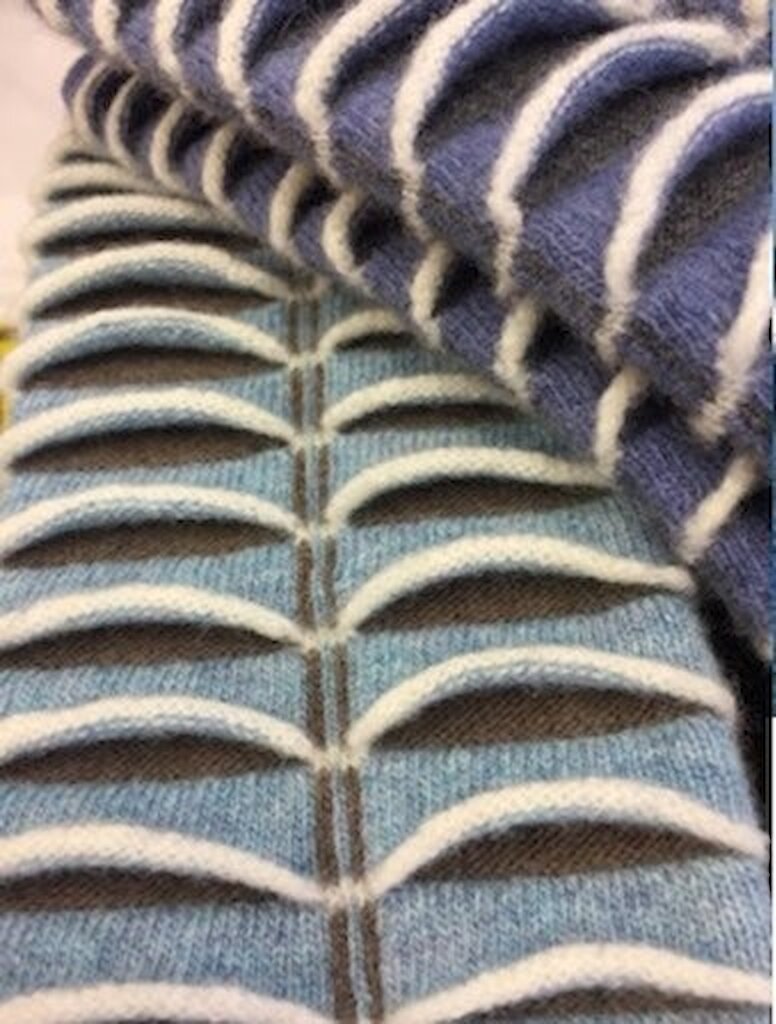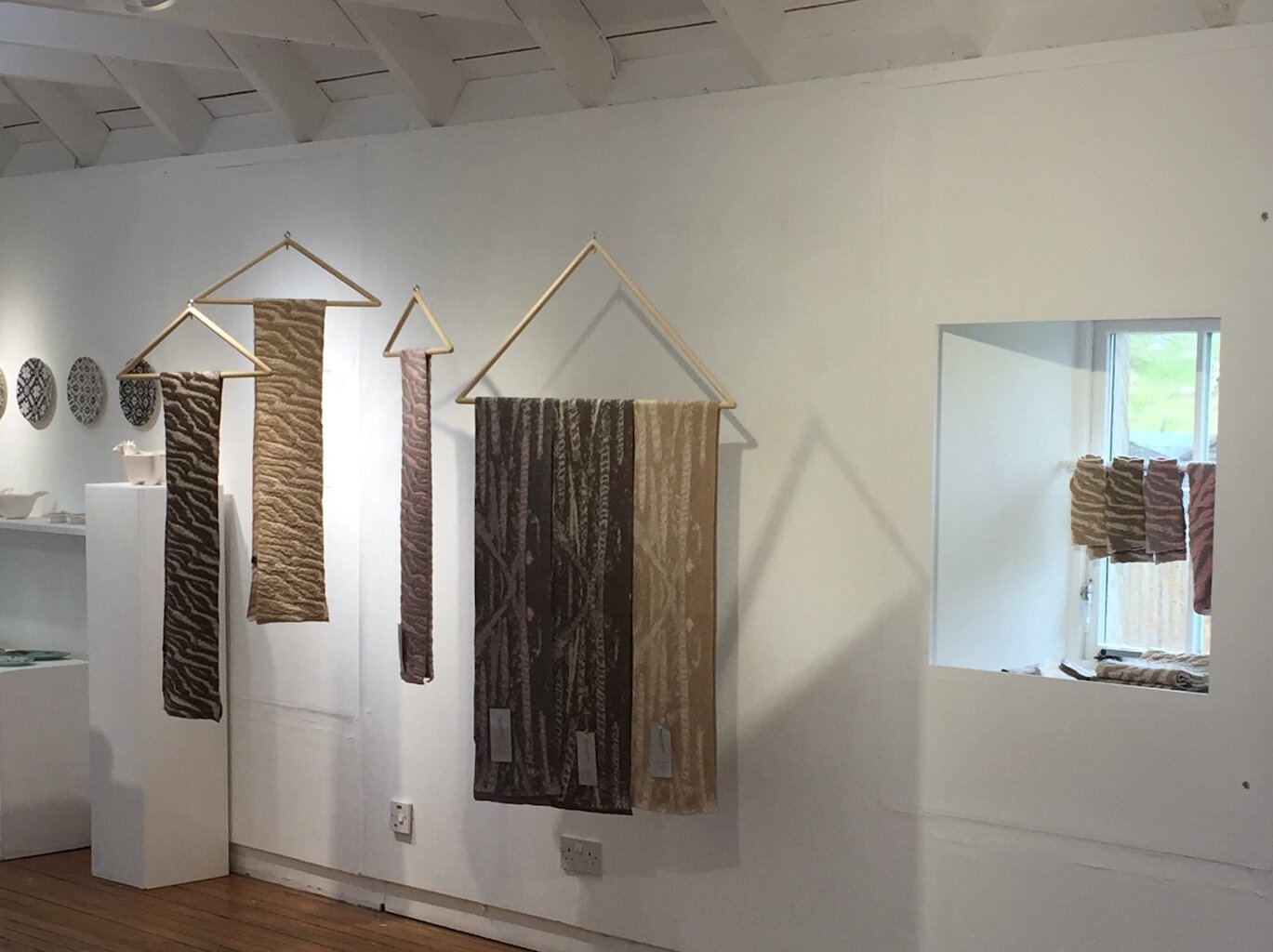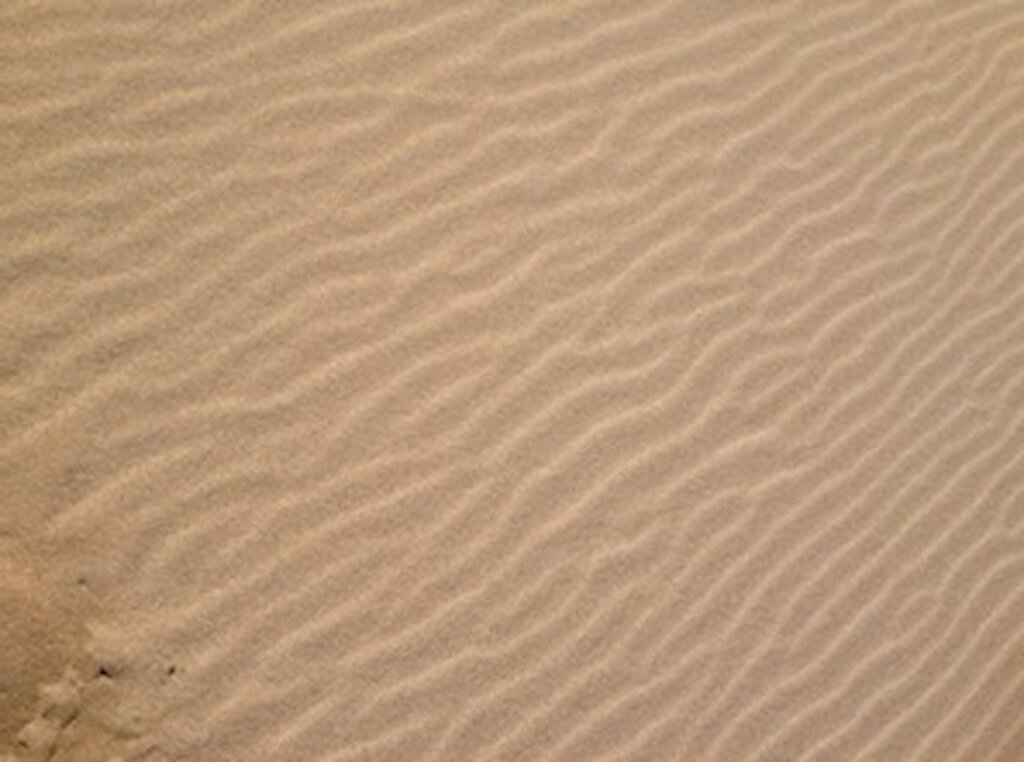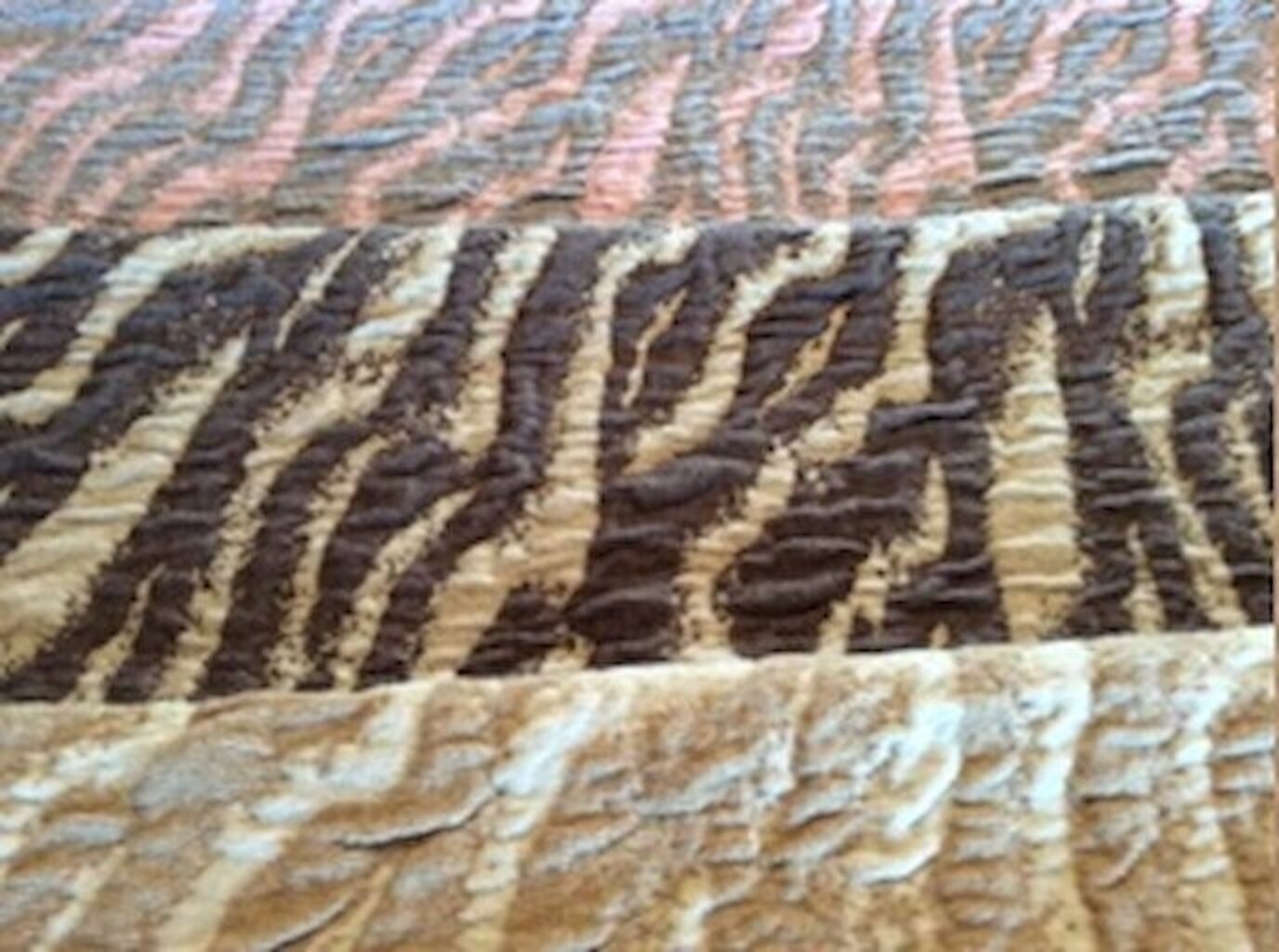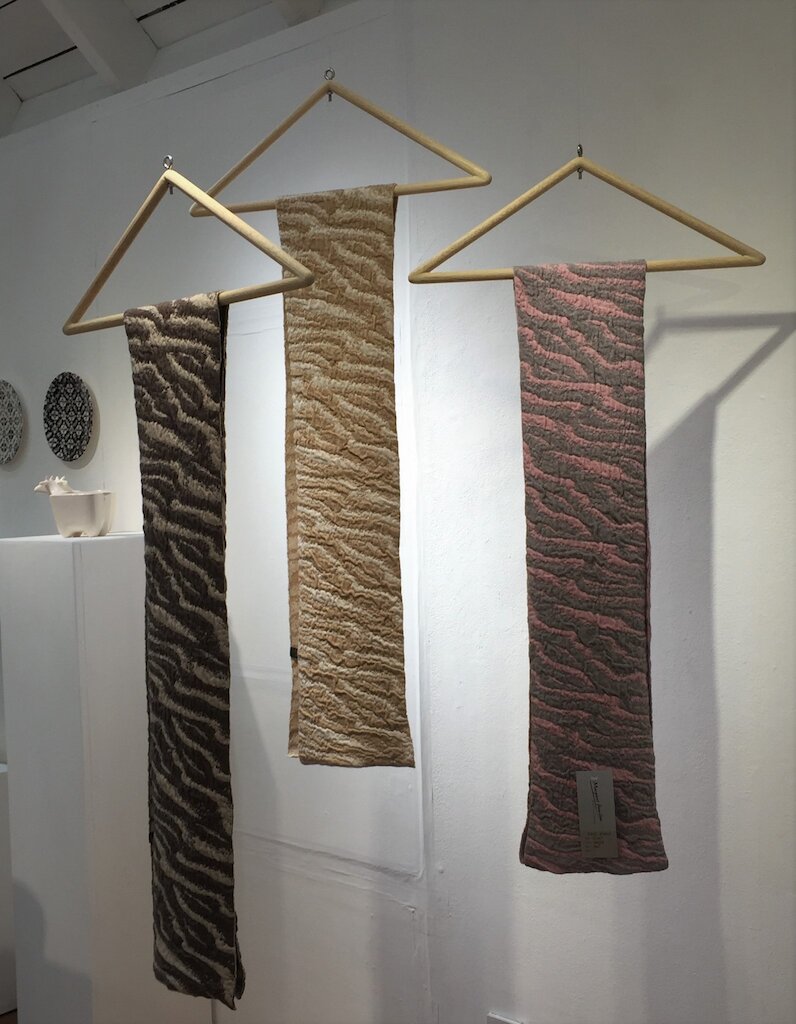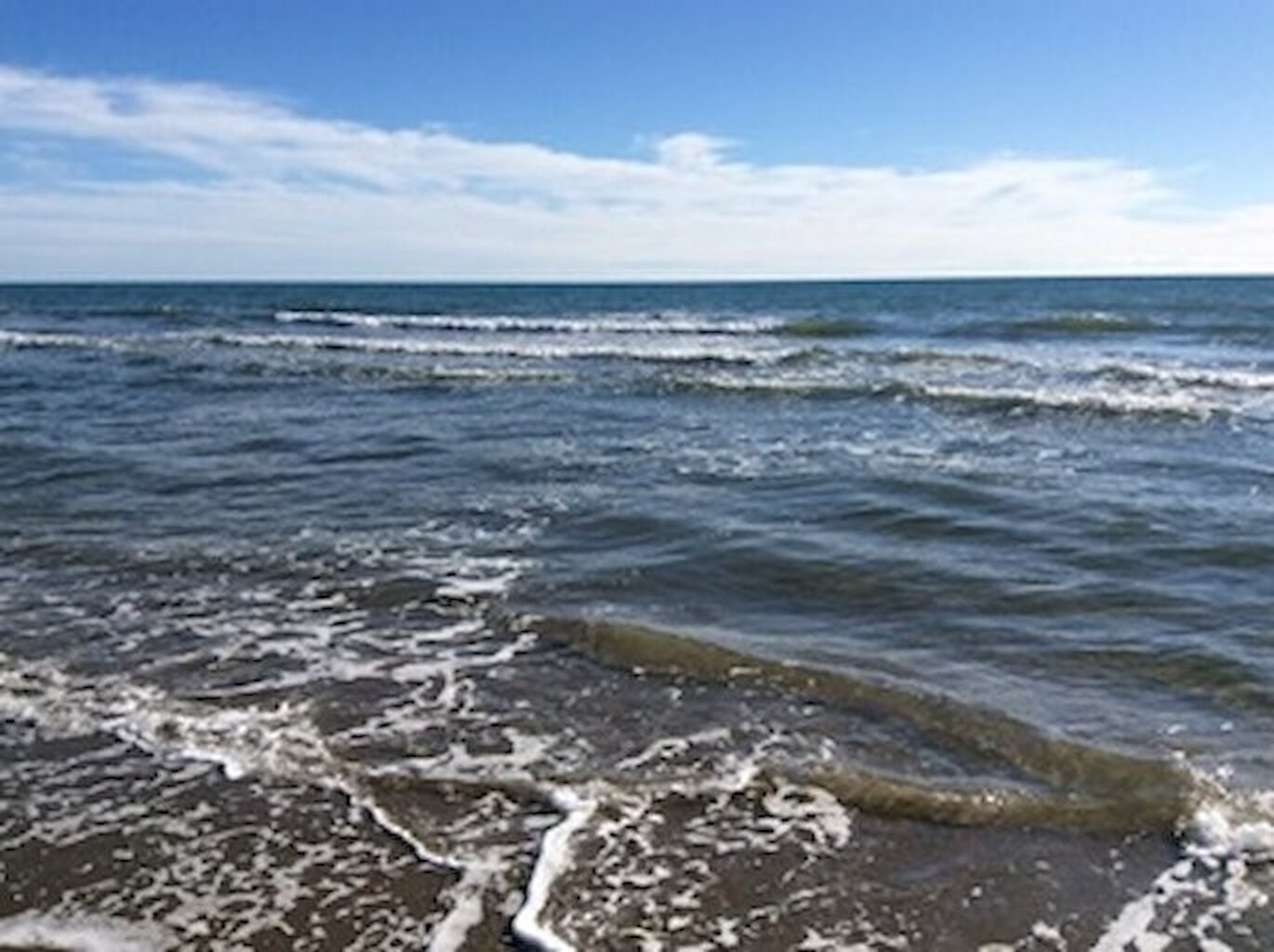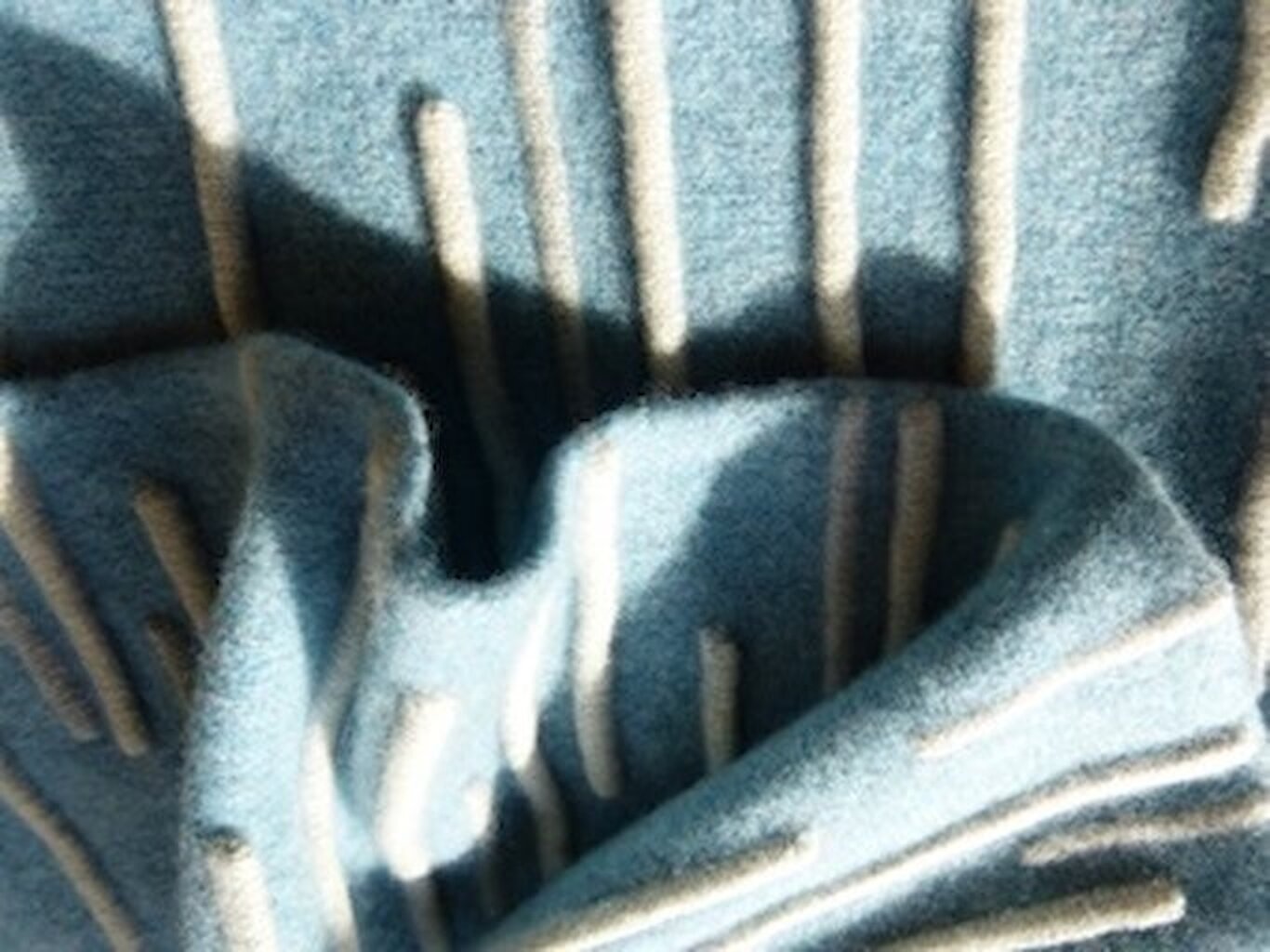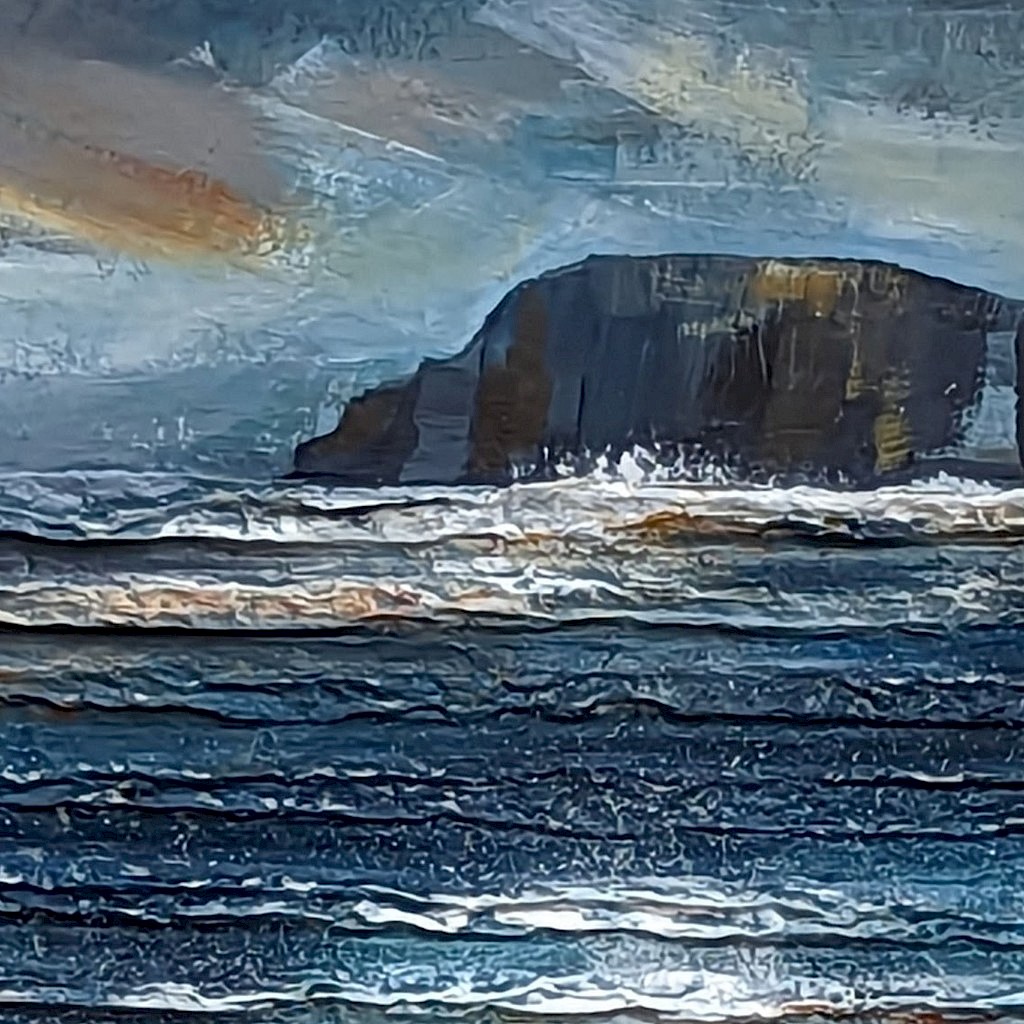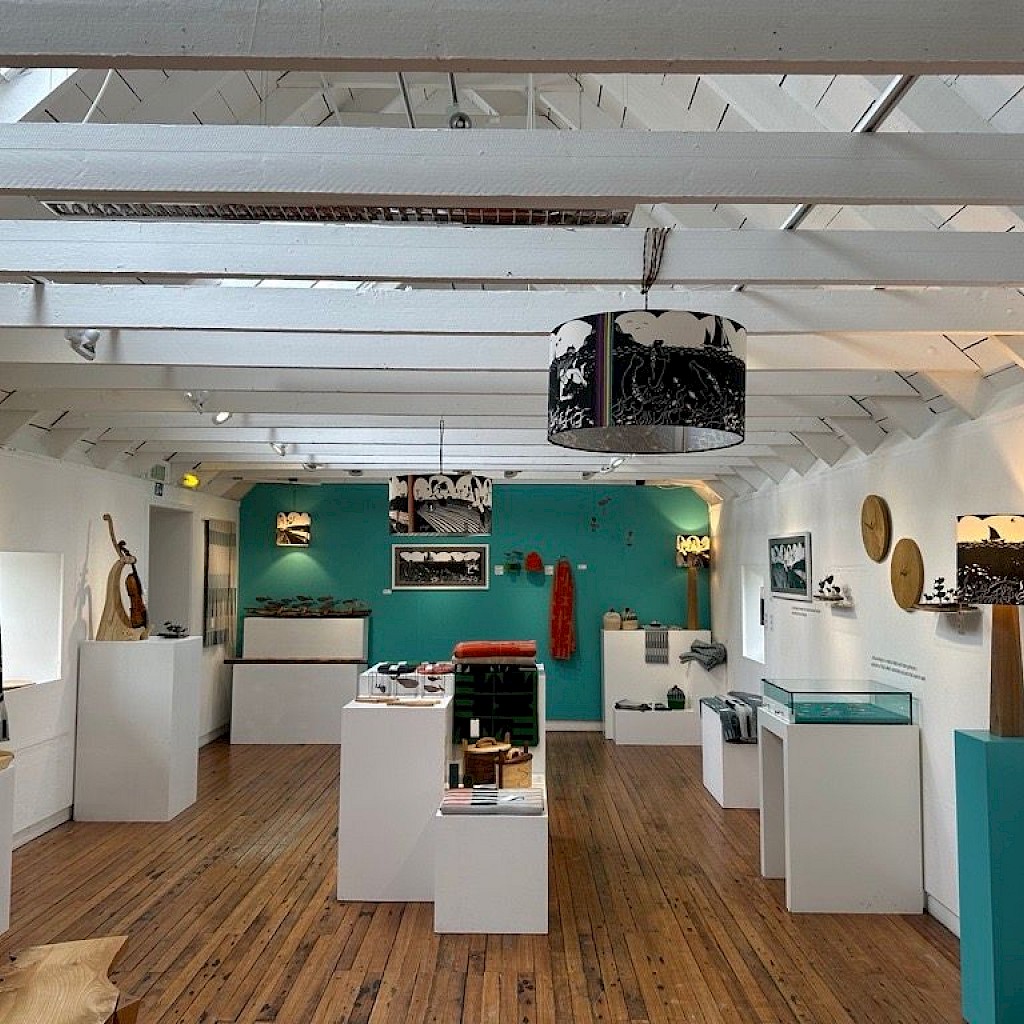Margaret’s popular range of contemporary knitwear draws inspiration from the way her surroundings are influenced by the weather; the changing moods, colours and shapes of the sea; the flotsam and jetsam of objects washed up on the shore and the windblown grasses in the fields.
Local textile designer Margaret Hamilton works from a small studio workshop at her home in Fladdabister, Shetland. Here Margaret shares with us photographs taken from her walks around Shetland and explains how the sea and landscape has inspired her popular collections.
We are delighted to showcase Margaret's work as part of this summers ShetlandMade programme.
The Tussock Collection
In some areas of Shetland where the grasses are left to grow naturally, they can reach quite a height. Inevitably the winds strengthen in the autumn and they are blown over. The way they fall over is not actually flat but in rounded “Tussocks”. I have tried to reproduce this in the Tussock Collection.
The Surf Collection
Waves in the sea are magical. How do they travel so far and stay so regular? I don’t know the science of how it works but I can appreciate the result. Hopefully the Surf Collection does them some justice.
The Shell Fossil collection
The Shell Fossil collection is my interpretation of a large flat rock I discovered on holiday one year. It had ancient sea creature fossils imbedded in it. They were some kind of conical shaped mollusc, but the way the rock surface had been worn away made them look flat. The knitwear pattern is the result of computer manipulation of a photograph I took at the time.
The Sand Ripple collection.
Everyone has seen the ripples left in the sand when the tide recedes. I saw this common phenomenon as a design challenge. Building surface texture into knitwear is of course a longstanding skill but modern techniques have enabled the enhancement of our capabilities.
The Moder Dy Collection
"Moder dy" is Shetland dialect for a type of underlying reflected ripple created from waves rebounding back out to sea from the shoreline.
Old fishermen are said to have been able to detect and interpret the strength and direction of these ripples and used their effect to guide them home from the distant “far haaf” fishing grounds.
Related Posts
